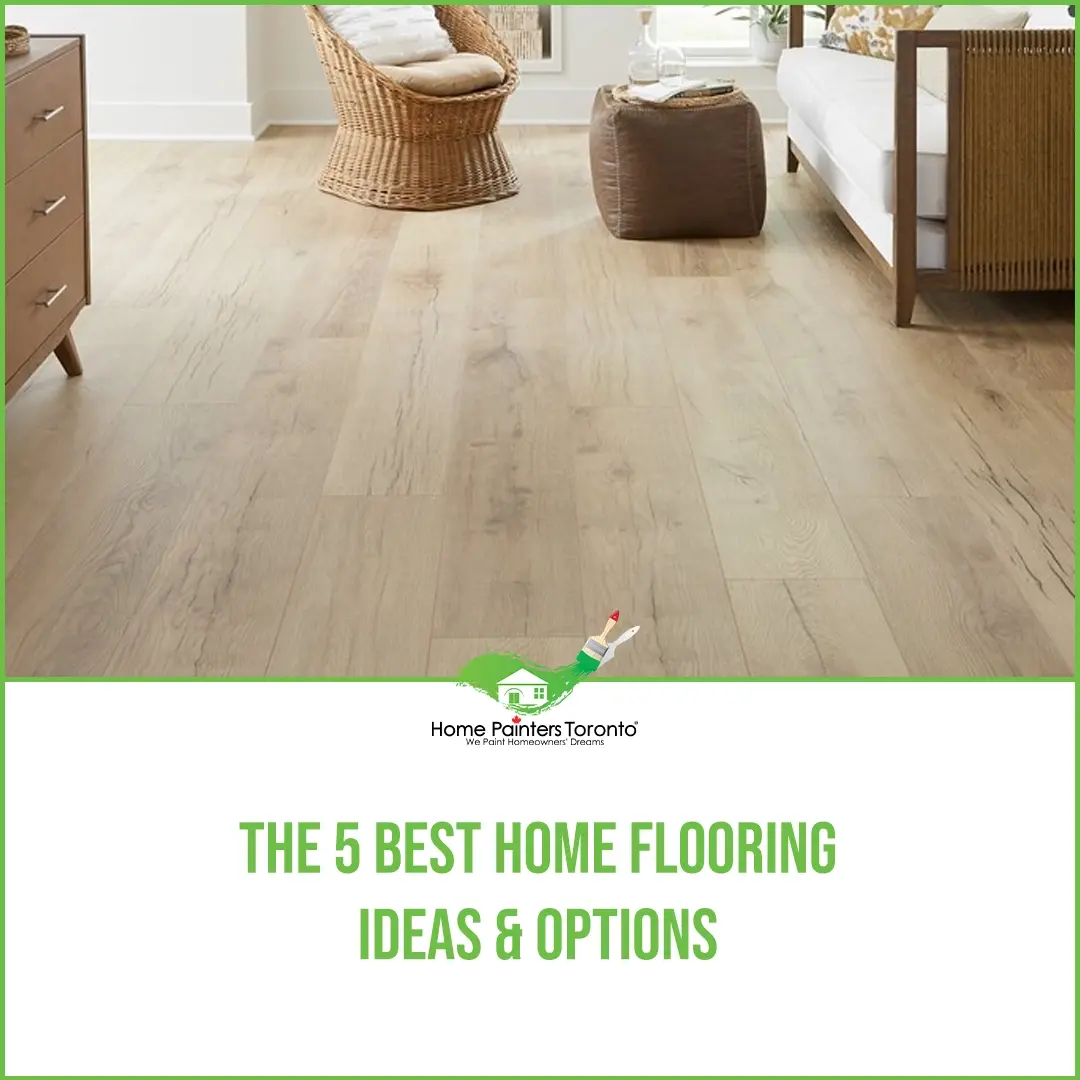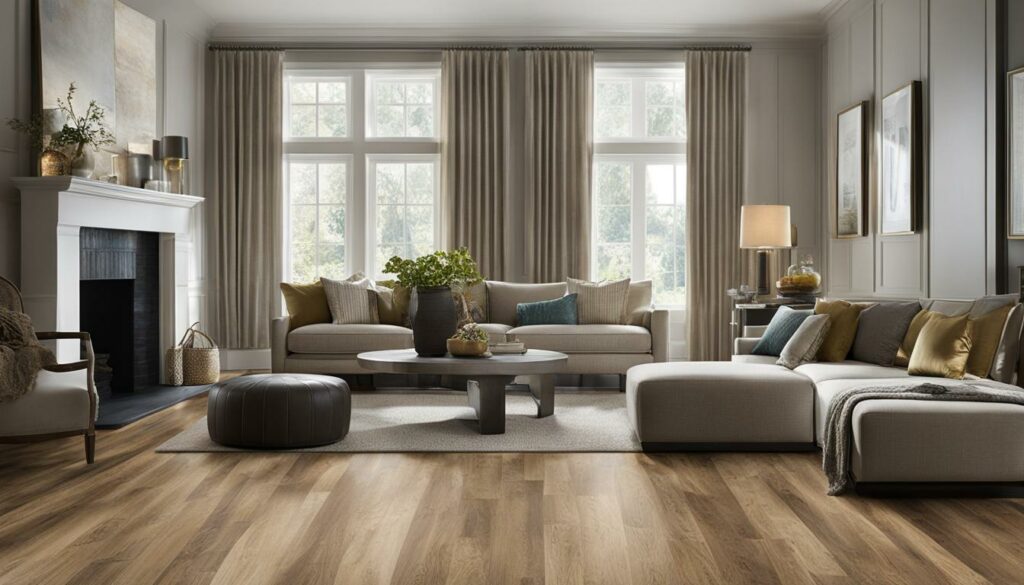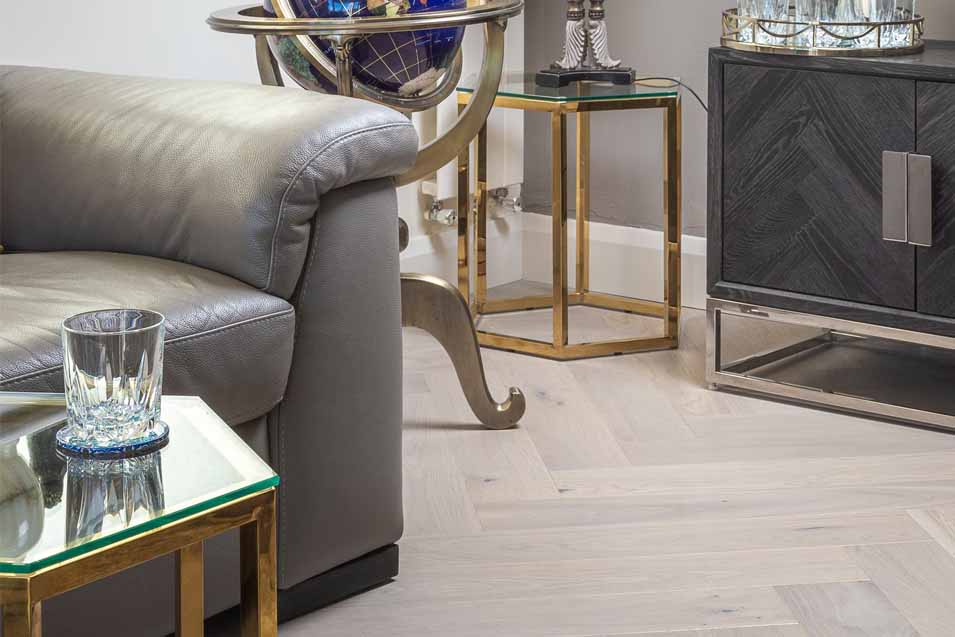What are the best flooring options for my house? This question not only invites exploration into a variety of materials but also encourages homeowners to consider both aesthetics and functionality. The right flooring can transform a space, enhance interior design, and ensure durability over time. With a multitude of choices available, each with distinct benefits and drawbacks, it is essential to navigate through the options thoughtfully to find the perfect match for your home.
From the timeless elegance of hardwood flooring to the modern convenience of laminate, each type presents unique characteristics. Tile flooring is praised for its versatility and ease of maintenance, while vinyl offers affordability and a wide array of styles. Understanding these materials, alongside cost considerations and environmental impacts, is crucial for making an informed decision that aligns with your personal preferences and lifestyle.
Types of Flooring Materials

When selecting flooring for your home, understanding the various materials available is essential. Each type of flooring presents its unique benefits and challenges, catering to different preferences, lifestyles, and budgets. This overview will explore hardwood, laminate, tile, and vinyl flooring, emphasizing their characteristics, advantages, and maintenance requirements.
The Workspace Design Show Amsterdam A Design Revolution has emerged as a pivotal event showcasing innovative concepts in workspace design. This exhibition not only highlights the latest trends but also fosters meaningful dialogues among professionals in the industry. Attendees can explore groundbreaking solutions that enhance productivity and well-being in the workplace, making it an invaluable experience for anyone interested in the future of design.
Hardwood Flooring
Hardwood flooring is celebrated for its timeless beauty and durability. Typically made from solid wood, it enhances a home’s aesthetic while providing long-lasting value. However, it also comes with a set of considerations.
The Workspace Design Show Amsterdam A Design Revolution presents a unique opportunity to explore innovative design concepts that redefine the way we perceive work environments. This event highlights the importance of creating spaces that foster creativity and collaboration, showcasing cutting-edge designs that are essential for modern workspace dynamics. Attendees can expect to engage with industry leaders and gain insights into the future of workspace design.
The primary benefits of hardwood flooring include:
- Aesthetic Appeal: Hardwood floors add a warm and inviting ambiance to any room, enhancing the overall design of a home.
- Durability: When properly maintained, hardwood floors can last for decades, making them a worthwhile investment.
- Value Addition: Homes with hardwood flooring often see increased resale value due to their popularity.
Conversely, there are drawbacks to consider:
- Cost: Hardwood flooring can be significantly more expensive than other options, both in material and installation.
- Maintenance: It requires regular upkeep, including refinishing over time to maintain its finish and appearance.
- Susceptibility to Damage: Hardwood floors can be scratched or dented and are sensitive to moisture, which can lead to warping.
Laminate Flooring
Laminate flooring is an engineered product designed to mimic the appearance of hardwood or stone while offering a more budget-friendly alternative. Its construction involves multiple layers that combine durability with ease of maintenance.
Key characteristics of laminate flooring include:
- Cost-Effective: Laminate is generally less expensive than hardwood while offering a similar aesthetic.
- Durability: The surface of laminate is resistant to scratches, stains, and fading, making it suitable for high-traffic areas.
- Easy Installation: Most laminate flooring features a click-lock design, allowing for straightforward installation without the need for glue or nails.
The installation process typically involves the following steps:
- Preparing the subfloor to ensure it is clean and level.
- Laying down an underlayment to provide cushioning and sound absorption.
- Connecting the laminate planks according to the manufacturer’s instructions, ensuring a seamless appearance.
Tile Flooring
Tile flooring is known for its versatility and resistance to moisture, making it an ideal choice for kitchens and bathrooms. Available in various materials such as ceramic, porcelain, and natural stone, tile offers numerous design options.
The advantages of tile flooring include:
- Durability: Tile is highly durable and can withstand heavy foot traffic, making it a long-lasting option.
- Moisture Resistance: Tiles are naturally resistant to water, making them suitable for areas prone to spills and humidity.
- Easy Maintenance: Regular sweeping and mopping are generally sufficient to keep tile floors clean.
However, tile flooring requires specific maintenance to ensure longevity:
- Grout Maintenance: Grout lines can become stained or discolored and may require periodic sealing.
- Cold Surface: Tile can feel cold underfoot, particularly in winter months, so radiant heating may be considered.
Vinyl Flooring Options, What are the best flooring options for my house
Vinyl flooring is a versatile and resilient alternative to traditional hard surface flooring. Available in sheets, tiles, or planks, it can imitate the look of wood, stone, or tile while offering practical benefits.
Comparing vinyl flooring with other materials reveals several advantages:
- Water Resistance: Unlike hardwood, vinyl is highly resistant to moisture, making it ideal for kitchens and bathrooms.
- Softness and Comfort: Vinyl flooring provides a softer surface underfoot compared to tile, making it more comfortable to stand on for extended periods.
- Easy Installation: Many vinyl flooring products feature a peel-and-stick or click-lock installation system, simplifying the process for homeowners.
Despite its benefits, vinyl flooring has some limitations compared to other materials:
- Durability Concerns: While vinyl is durable, it may not have the same lifespan as hardwood or tile.
- Environmental Impact: Vinyl is a synthetic material, raising concerns about its environmental footprint and recyclability.
Cost Considerations
When selecting flooring for your home, understanding the cost implications is paramount. Flooring can represent a significant investment, and the choice of material can affect both your immediate budget and long-term financial considerations. This section will break down the costs associated with various flooring options and highlight the factors that can impact your overall expenditure.
Cost Breakdown of Flooring Options
The cost of flooring materials varies widely based on the type chosen. Below is a detailed breakdown of common flooring materials on a per square foot basis. This will provide clarity on what to expect in terms of initial investment.
| Flooring Type | Cost per Square Foot |
|---|---|
| Vinyl | $2 – $5 |
| Laminate | $1 – $3 |
| Carpet | $2 – $6 |
| Tile | $1 – $20 |
| Hardwood | $5 – $15 |
| Natural Stone | $5 – $30 |
Investing in quality flooring materials may initially seem costly; however, it can yield significant long-term value. High-quality flooring often outlasts cheaper alternatives, providing durability and reducing the frequency of replacement. Over time, this can result in lower overall costs and greater satisfaction with your investment.
Long-Term Value of High-Quality Flooring
Investing in high-quality flooring is beneficial for several reasons:
- Durability: Premium materials are more resistant to wear and tear, which minimizes the need for repairs or replacement.
- Maintenance Savings: High-quality floors often require less maintenance, thereby reducing costs associated with upkeep.
- Increased Home Value: Quality flooring can enhance the aesthetic appeal of your home, potentially increasing its market value.
- Energy Efficiency: Some flooring options, such as high-quality insulative materials, can contribute to reduced heating and cooling costs.
The initial investment in quality flooring can lead to significant savings over time through durability, reduced maintenance, and increased property value.
Potential Hidden Costs During Flooring Installation
When budgeting for flooring installation, it is essential to consider potential hidden costs that can arise. These costs can sometimes catch homeowners off guard, impacting the overall expenditure.
- Underlayment Costs: Often necessary for certain flooring types, underlayment can add $0.50 to $2 per square foot.
- Labor Fees: Professional installation typically ranges from $1 to $5 per square foot, depending on the complexity of the job.
- Preparation Costs: This includes removing old flooring and preparing the subfloor, which can incur additional charges.
- Trim and Molding: Baseboards and transitions may require replacement or installation, adding to the overall cost.
Financing Options for Flooring Renovations
Understanding available financing options can facilitate your flooring renovation without straining your budget excessively. Several avenues exist for homeowners looking to finance their flooring projects:
- Home Improvement Loans: Many lenders offer loans specifically designed for home renovations, often with competitive interest rates.
- Credit Cards: Some homeowners may opt to use credit cards that offer promotional financing for large purchases.
- Retail Financing: Many flooring retailers provide financing plans that allow for staggered payments, sometimes with zero interest for a promotional period.
- Home Equity Lines of Credit (HELOC): Utilizing the equity in your home can provide access to funds for renovations at potentially lower interest rates.
Environmental Impact: What Are The Best Flooring Options For My House

The environmental impact of flooring choices is a crucial consideration for homeowners seeking sustainable living solutions. Selecting the right flooring material not only affects the aesthetics and functionality of a home but also has significant implications for the environment. Sustainable flooring options are designed to minimize ecological footprints while promoting healthier indoor environments.Sustainable flooring options, such as bamboo, cork, and reclaimed wood, offer numerous benefits.
They are often sourced from renewable resources, which means that their use does not deplete natural materials. For instance, bamboo thrives quickly and can be harvested in as little as three to five years, making it an excellent choice for eco-conscious consumers. Additionally, cork is harvested from the bark of cork oak trees without harming the tree itself, allowing it to regenerate and continue to absorb carbon dioxide over its lifespan.
Sourcing Materials from Renewable Resources
The importance of sourcing flooring materials from renewable resources cannot be overstated. Utilizing renewable sources helps to conserve natural ecosystems and reduces the dependency on finite resources. The benefits of using renewable materials in flooring include:
- Reduced Carbon Footprint: Renewable materials typically consume less energy during production and processing, resulting in lower greenhouse gas emissions.
- Preservation of Biodiversity: Sustainable harvesting practices ensure that ecosystems remain intact, preserving habitats for various species.
- Economic Advantages: Investing in renewable resources can stimulate local economies by supporting sustainable industries and creating jobs.
Impact on Indoor Air Quality
Flooring materials significantly influence indoor air quality, which has direct implications for health and well-being. Many conventional flooring options release volatile organic compounds (VOCs), which can contribute to respiratory issues and allergies. Sustainable flooring alternatives can enhance indoor air quality due to their lower emissions. For example, natural linoleum, made from renewable materials like flaxseed oil and wood flour, offers a non-toxic option that emits minimal VOCs compared to traditional vinyl flooring.
On the other hand, carpets made from synthetic fibers can trap dust and allergens, negatively affecting air quality. Homeowners should prioritize materials that contribute to a healthier living environment.
Sustainability through Lifecycle Analysis
Evaluating the lifecycle of various flooring types is essential for understanding their sustainability. The lifecycle encompasses the extraction of raw materials, manufacturing processes, distribution, installation, use, and disposal. A comparative analysis reveals that some flooring materials are significantly more sustainable than others. For instance:
- Bamboo: Fast-growing and renewable, bamboo flooring can last for decades, but it is crucial to ensure it is sourced from environmentally responsible suppliers.
- Reclaimed Wood: This option repurposes old wood, reducing waste and the demand for new lumber. Its unique aesthetic also adds character to homes.
- Cork: As a renewable resource, cork not only provides effective insulation but also has a long lifespan and can be recycled at the end of its life.
- Vinyl: While affordable and versatile, traditional vinyl flooring can have a detrimental environmental impact due to its PVC content and the non-renewable resources required for its production.
Understanding the environmental impact of flooring choices empowers homeowners to make informed decisions that benefit both their homes and the planet. By prioritizing sustainable materials, individuals can significantly reduce their ecological footprint and promote a healthier living environment.
Design and Aesthetic Choices

Selecting the right flooring is not only essential for functionality but also plays a crucial role in the overall aesthetics of your home. The flooring you choose can complement your home décor, enhance the ambiance of each space, and even reflect your personal style. With the multitude of options available, it is important to consider color, pattern, and material to achieve a cohesive look throughout your home.When it comes to flooring design, the color and pattern you select can significantly influence the perception of space.
Lighter shades tend to create an airy and open feel, making small rooms appear larger, while darker tones can add warmth and coziness. Additionally, patterns, whether they be bold geometric designs or subtle textures, can serve as a focal point or blend seamlessly into the background.
Color and Pattern Selection
Choosing the right colors and patterns for your flooring can dramatically enhance the overall decor of your home. Here are some tips to guide your decision-making process:
- Consider the existing color palette of your home. Choose flooring that complements or contrasts effectively with wall colors and furnishings.
- Utilize neutral tones for a classic look that can adapt to various decorative styles over time.
- Explore patterns that reflect your personality, such as herringbone or chevron, to create visual interest without overwhelming the space.
- In open-concept areas, ensure that the flooring maintains a sense of unity between spaces by selecting colors and patterns that harmonize across the gathered areas.
Influence of Flooring Style on Ambiance
The style of flooring you select can set the tone for the entire room. Different materials and designs evoke distinct feelings and atmospheres. Here are ways flooring style can create various ambiances:
- Wooden flooring, especially with a rustic finish, instills warmth and comfort, making spaces feel inviting and homey.
- Tile or polished concrete can evoke a modern and sleek look, ideal for contemporary homes.
- Soft carpets lend a cozy and intimate ambiance, perfect for bedrooms and living rooms.
- Unique flooring materials, such as bamboo or reclaimed wood, can introduce an eclectic touch, enhancing creativity and individuality.
Mixing Different Flooring Materials
In open-concept designs, mixing different flooring materials can add depth and dimension to your space. Here are some guidelines:
- Define distinct areas by using different materials; for instance, hardwood in the living area and tile in the kitchen can demarcate these spaces while maintaining flow.
- Ensure the transition between materials is seamless by using matching transition strips or ensuring similar tones.
- Consider the functionality of each area; for example, use durable flooring in high-traffic zones and softer materials in areas designated for relaxation.
- Use area rugs to visually unify different flooring types while adding texture and comfort.
Examples of Flooring Designs for Various Home Styles
The choice of flooring must align with the architectural style of your home. Here are examples tailored for different home aesthetics:
- Modern: Opt for sleek, large-format tiles or polished concrete to create an open, airy ambiance.
- Rustic: Choose hand-scraped hardwood or natural stone to bring earthy warmth and a touch of nature indoors.
- Traditional: Rich, dark hardwoods with intricate patterns or parquet designs can enhance the elegance of classic homes.
- Eclectic: Mix and match various textures and styles, such as colorful tiles paired with reclaimed wood, to reflect a unique and personal aesthetic.